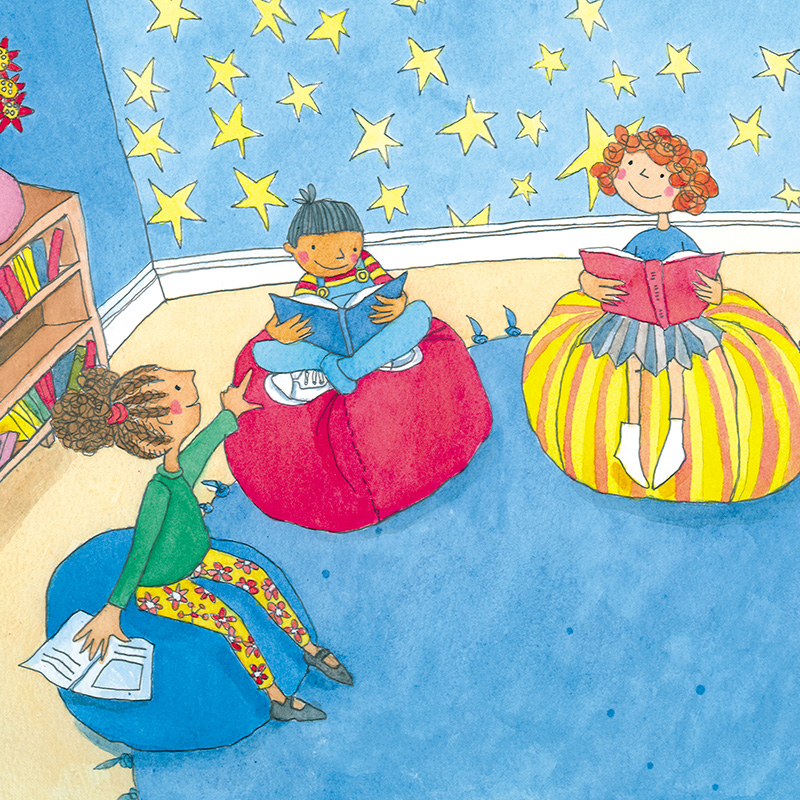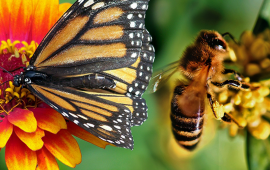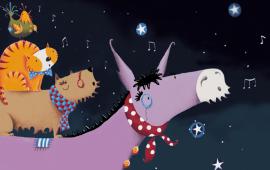Translating or translanguaging? Helping multilingual pre-schoolers communicate - research from the Victoria University of Wellington
You all know we love to share stories. You all know we adore soundscapes, and making the world come alive with noise, in the nicest possible way. And you know we’re just brimming with enthusiasm for our multilingual resources and our multilingual books.
We love them partly because they help children and caregivers bond over a bedtime story (or two!). We love our multilingual stories partly because they help keep tale alive in their original language and make them accessible in English. And we love our stories partly because, well, our multilingual books are just so much fun. (We know. We might be very slightly biased on that last one.)
You probably also know we love to hear about about academic research into how children acquire languages, and how teachers and parents encourage them. We especially love to learn about research that is based in the real world, and not just the ivory towers that you can sometimes find in academia. So we were really thrilled to learn about the Wellington Translanguaging Project.
Researchers at the School of Linguistics and Applied Language Studies at the Victoria University of Wellington in New Zealand have been carrying out work within preschools in communities to see how multilingual speakers communicate. Rather than making children speak English all the time, multilingual speakers use an approach called translanguaging. Essentially, they use whatever tools and vocabulary and knowledge they already have at their disposal to make themselves understood.
The study is led by Dr. Corinne Seals, with her colleague Vini Olsen-Reeder and a supporting team of nine researchers. The first book was produced in Samoan and English, with the other book in Māori, and English. The aim was to produce interactive, practical resources to help to build confidence, vocabulary and understanding and knowledge of content, as well as cultural understanding.
The research also incorporates what Dr. Seals describes as “neurolinguistics and syntactic principles”, so there’s masses of science and previous evidence-based research underpinning the project. Dr. Seals speaks 11 languages herself and regularly presents her research into multilingualism on the international stage. The research comes under the umbrella of Translanguaging Aotearoa and has been underway for two years now. We’ll be keeping a keen eye on the next developments.
Further Information
All resources were successfully accessed on 6 December 2019
We love them partly because they help children and caregivers bond over a bedtime story (or two!). We love our multilingual stories partly because they help keep tale alive in their original language and make them accessible in English. And we love our stories partly because, well, our multilingual books are just so much fun. (We know. We might be very slightly biased on that last one.)
You probably also know we love to hear about about academic research into how children acquire languages, and how teachers and parents encourage them. We especially love to learn about research that is based in the real world, and not just the ivory towers that you can sometimes find in academia. So we were really thrilled to learn about the Wellington Translanguaging Project.
Researchers at the School of Linguistics and Applied Language Studies at the Victoria University of Wellington in New Zealand have been carrying out work within preschools in communities to see how multilingual speakers communicate. Rather than making children speak English all the time, multilingual speakers use an approach called translanguaging. Essentially, they use whatever tools and vocabulary and knowledge they already have at their disposal to make themselves understood.
The study is led by Dr. Corinne Seals, with her colleague Vini Olsen-Reeder and a supporting team of nine researchers. The first book was produced in Samoan and English, with the other book in Māori, and English. The aim was to produce interactive, practical resources to help to build confidence, vocabulary and understanding and knowledge of content, as well as cultural understanding.
The research also incorporates what Dr. Seals describes as “neurolinguistics and syntactic principles”, so there’s masses of science and previous evidence-based research underpinning the project. Dr. Seals speaks 11 languages herself and regularly presents her research into multilingualism on the international stage. The research comes under the umbrella of Translanguaging Aotearoa and has been underway for two years now. We’ll be keeping a keen eye on the next developments.
Further Information
All resources were successfully accessed on 6 December 2019
- Victoria University of Wellington (2019), Building preschoolers' language learning confidence, 5 December 2019, https://phys.org/news/2019-12-preschoolers-language-confidence.html
- Victoria University of Wellington (c.2019), Experience Translanguaging Aotearoa, https://www.translanguaging.nz
Related Posts
-
Wild March winds and gentle April showers eventually help May flowers to grow in our gardens, so where are the bees and butterflies?
-
Dual Language Story Books - Welcome, Bienvenu, Come on In
-
Language – so much more than just the spoken word
-
Look Before You Leap – And What Have Silk Gloves Got To Do With Leap Years?
-
In the Land of the Northern Lights
-
Celebrating Refugee Week
-
When is a fruit not a fruit? When it’s a tomato…which is also a vegetable...
-
Sing something simple – using songs for language learning
-
Languages for SEN: The origins of Braille, Sign Language and Makaton
-
A Few Fun February Facts













